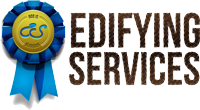Two years after Barbara’s fall down the stairs, we went on vacation in late September. Barbara first went to a women’s conference while I took a business trip to a city on the coast. After my business was completed, I drove to the conference site and picked up Barbara before heading down to the Mediterranean Sea.
This was our favorite time to be at the beach; it was not too hot, the beaches were empty and the water was warm. We were both pretty tired and looked forward to a quiet time at the beach: reading, swimming, walking and resting. And we did have a very relaxing, refreshing time.
However, when we arrived back home, I was just as tired as before I went, and I was having those chest pains again. As the days passed, the pains got worse.
A friend’s father had just had two stents put into his heart so he recommended his cardiologist to me. I got an appointment for the next evening. By that time my chest pain was strong enough so that I was constantly bending over, pressing my left arm against my chest. The doctor, however, didn’t seem too concerned about my pain. He just looked over the test results I’d brought him from the States, and said he wanted to repeat the tests in a lab in his building.
His lack of concern for the pain I was experiencing and his merely ordering more of the same tests to be done by his neighbor’s lab didn’t sound too professional to me. I took the prescription for the tests and left.
When I got home, I gave my test reports back to Barbara to file away, but before doing so she glanced through them. “Did you realize that in the report from the cardiologist in the US he listed your occupation as ‘gospel sharer?’” she asked.
“No!” I said. Hmmm, that was not good. Gospel sharers are viewed as enemies here. I didn’t know this doctor’s religious views, but it would be easy for him to let me die under the knife if he were conservative in beliefs.
This was not an unfounded thought. We’d had a friend who was left to die by a doctor in a hospital. But because she was a nurse, she knew what was happening and got help. So it was not all that far-fetched to consider the idea of being “done in” by a doctor.
The next day I went to the little hospital in our neighborhood where Barbara had received such good care after her fall, and had the tests redone there. Also once before I had visited the cardiologist there and had really liked him.
While I was waiting to have my blood drawn, the cardiologist’s nurse saw me and asked what was up. I told her about my pain. She patted me on the arm and said in her motherly way, “When you pick up the results to these tests, you bring them right over to the cardiologist and let him look at them.”
So that afternoon i got the results and I went to see him. I just knocked on his door and he took me in. He read the test results and immediately sent me with his nurse to do a stress test.
He then looked carefully at the printout from that test, and called me over. “Look here,” he pointed to the EKG results, “see how this dips below the line? That can indicate a blockage. And your irregular pulse also points to that.”
None my cardiologists in the States had noticed these two indicators, telling me I was fine. He continued, “There’s only one way to find out for sure what’s happening in your heart and that’s by doing an angiogram, taking a direct look inside. I can do one later this afternoon if you’d like.”
That’s one thing I really liked about the medical system here. If you are a private patient, you can get things done right away rather waiting weeks for an appointment. “Well,” I said, “my son is getting engaged tonight, and I don’t want to miss that. How about if we do it tomorrow?”
“Ok,” he replied, “here’s the address of the hospital. Be there at 2 pm tomorrow.”
Picture: ready for my stress test


